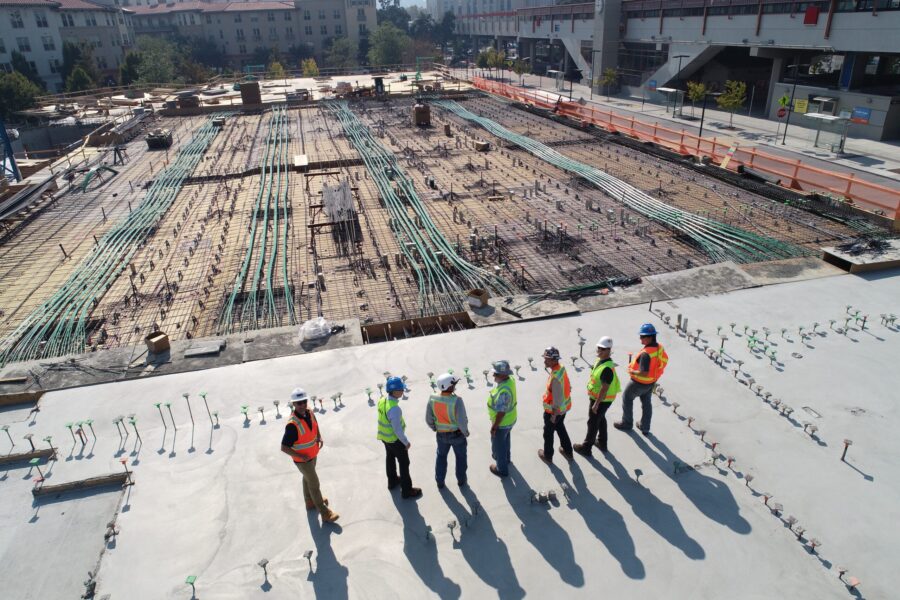Improving project controls in project management means focusing on what is physically happening on the project and comparing this to what was planned. 10 ways project controls can be improved are:
- Automate data collection and analysis
- Adopt project management methodologies
- Implement a robust change control process
- Use project management software
- Establish regular project reporting
- Monitor and manage risks
- Implement quality control measures
- Foster effective communication
- Lessons learned database
- Invest in training and development
At Proteus, many of our team members have spent years working on complex projects and have first-hand experience with collecting, analyzing, and implementing project data to guide project performance. Time and time again we have seen a disconnect between the data collected and the management of the project team: sometimes the data is siloed and hard to access (for example, stuck in a spreadsheet); sometimes there is no alignment between the planned goals and the data being reported. The list goes on. All our clients come to us with the express desire of improving the way their projects are run, ultimately to increase efficiencies and manage margins. Project controls are key to achieving this.
Project Controls are defined as “A project management function that involves comparing actual performance with planned performance and taking appropriate corrective action (or directing others to take this action) that will yield the desired outcome in the project when significant differences exist.” The PMBOK® Guide
If a team has adequate processes in place to monitor and manage data and decision-making properly with the necessary resources, then project controls provide the critical scrutiny needed to solve a problem before it happens. However, very often project teams struggle, often due to the sheer volume and complexity of work and insufficient resource levels. This creates a vicious cycle where inefficiencies breed more inefficiencies and a project can easily end up running significantly over budget and delayed.
How can project controls in project management be improved?
Improving project controls in project management involves implementing strategies and practices that enhance the monitoring, tracking, and management of project activities. Each business will of course vary and the steps needed to improve the project controls will depend on the specific needs of the team and work. However, there are strategies project managers can take to strengthen project controls, improve visibility, and increase the likelihood of project success.
- Automate data collection and analysis: Leverage technology and project management software to automate data collection and analysis. This can reduce manual efforts, improve accuracy, and provide real-time insights into project performance.
- Adopt project management methodologies: Consider adopting agile methodologies which emphasize iterative development, flexibility, and frequent feedback. Agile approaches can help reduce project complexities and improve task planning. Use work breakdown structures (WBS) to break down the project into manageable tasks and establish clear milestones. A well-structured project plan provides a basis for effective control and monitoring.
- Implement a robust change control process: Establish a change control or variations process to manage scope changes effectively. Clearly define change request procedures, evaluate their impact on scope, schedule, and budget, and communicate changes to relevant stakeholders promptly. Ensure that changes are properly documented, evaluated, and approved before implementation.
- Use project management software: Leverage project management software tools to aid in project control. These tools can assist in tracking progress, managing resources, identifying critical path activities, and generating reports. They provide real-time visibility into project performance and enable effective control and also force teams to use standardized templates for project planning, progress tracking, and reporting. These can help streamline project controls processes and ensure consistency across projects.
- Establish regular project reporting: Implement a reporting mechanism that provides timely and accurate project updates. Define key performance indicators (KPIs) and metrics to measure progress. Make sure calculations are immediately verifiable and accessible such as schedule variance, cost variance, and earned value. Avoid excessive and unnecessary data and present information in a concise and easily understandable format. Regularly communicate project status to stakeholders through status reports, dashboards, and meetings.
- Monitor and manage risks: Develop a continuous risk management plan and regularly assess project risks. Identify potential risks, evaluate their impact and likelihood, and define appropriate mitigation strategies. Regularly monitor risks throughout the project lifecycle and proactively address potential risks to prevent or minimize their impact.
- Implement quality control measures: Define quality standards and implement quality control processes to ensure project deliverables meet the required level of quality. Establish quality checkpoints, perform inspections, and conduct regular audits to verify compliance with standards. Address any quality issues promptly to prevent rework and delays.
- Foster effective communication: Communication is vital for project control. Establish clear communication channels and encourage open and transparent communication among project team members, stakeholders, and sponsors. Ensure that information flows effectively, risks and issues are promptly escalated, and decisions are communicated in a timely manner. This helps in ensuring transparency, resolving issues promptly, and maintaining project alignment.
- Lessons learned database: Maintain a repository of lessons learned from previous projects. Schedule periodic project reviews to evaluate progress, performance, and adherence to project controls. These reviews help in continuously enhancing project controls. Capture insights, best practices, and challenges faced, and use them to inform future projects. This can help in avoiding similar pitfalls and improving project controls efficiency. This database can also be useful for winning work, pulling all the information into one place for easy searching and sharing in proposals.
- Invest in training and development: Provide project management training and professional development opportunities to project managers and team members. Enhancing their skills and knowledge in project controls and management techniques will contribute to better project outcomes.
About Proteus
Proteus developed by a Scottish-based tech company, Xergy Group, is an end-to-end project management solution developed for the energy and engineering consulting industries.
Proteus is industry-proven and enables consultancies to meet project demands across the full lifecycle, from proposal development to project delivery. With robust sales and project delivery modules, Proteus helps its customers win more business, increase efficiencies, manage expenditures, and improve project controls.
Critical workflows, automation, and controls are integrated into Proteus. These include opportunity evaluation, proposal building, resource planning, budget tracking and forecasting, real-time multi-level restricted dashboards, and project performance analytics.
Third-party integrations and customised solutions allow Proteus’ users, which include C-suite, project leads, and engineers, to get the exact software solution needed for their business.
We offer a free onboarding consultation service to ensure your company account is set up to your company’s needs.
How to get Proteus
Proteus operates under a software-as-a-service (SaaS) model. We offer Enterprise packages and flexible pricing solutions: contact our team to learn more.
We designed Proteus to be simple, and that means you can get up and running on Proteus without an IT team or support from a programmer. You will want to spend a bit of time configuring the admin console so that you have everything set up to suit your company structure, but it’s very intuitive and you don’t need a PhD in IT.
However, we want you to get the best out of what is a brilliantly powerful tool, so don’t hesitate to ask for our support. We have a team of product experts who are ready to help you with the configuration process, so get in touch today by filling out the form below:



